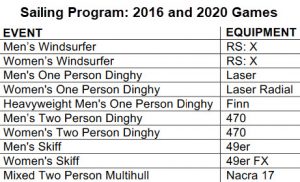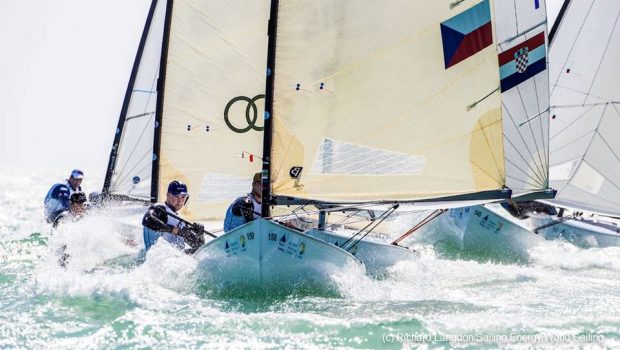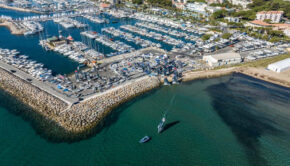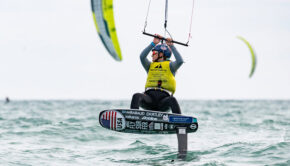Finn battling to retain Olympic status
Published on February 13th, 2018
The Finn – the classic power dinghy – was designed to test the best individual sailor at the Olympic Games. This thoroughly modern, but endearingly classic dinghy has been successfully doing that through 17 Olympics and is heading towards its 18th in Tokyo 2020.
However, it could also be its last Games too.
 With the push by the International Olympic Committee to have equal medal events for men and women, World Sailing must determine how to get to that status for the 2024 Olympics. Currently the 10 events are tilted toward the men… because of the Finn.
With the push by the International Olympic Committee to have equal medal events for men and women, World Sailing must determine how to get to that status for the 2024 Olympics. Currently the 10 events are tilted toward the men… because of the Finn.
To balance participation at Tokyo 2020, the number of Finns competing in the Games has been reduced from the 23 competitors at Rio 2016. With only 19 spots now available in Tokyo, competition will be intense. Fifteen of the 23 sailors who took part in Rio are now on the campaign trail and have their sights set on the land of the rising sun in two years time.
Of one thing we can be sure, it is going to be a gruesome battle to determine those places, and Finn sailors are not pretty when their backs are against the wall. Think fist meets wall.
Today’s Finn sailors are becoming more powerful, more adaptable and more astute than ever before. They need to be, because the level is rising all the time. The return of the 2016 Olympic Champion, Giles Scott, in Miami a few weeks ago, and his inevitable win, has thrown down the gauntlet to the fleet to step up to the mark and challenge him for class supremacy.
Even in the 18 months since Rio, technique has moved on and sailors are trying out new ideas. The advent of free pumping was a eureka moment for the class. Suddenly the sailors could use their immense power and strength to enjoy the Finn to the full, for sailing the boat downwind in a breeze is a powerful experience.
With the class now experimenting with dropping the wind limit for free pumping from 10 to 8 knots, as it was dropped from 12 to 10 knots in 2010, it is evidence enough of the vastly increased fitness and athletic ability of the top of the fleet. It is pushing the sailors to the extreme of what the body can take, testing and challenging every minute of preparation.
In any sort of breeze, the Finn requires enormous physical capabilities and huge power and strength reserves to be able to drive the boat at maximum speed for the duration of the race. The better you get at it, the easier it becomes, but the fundamental requirement is power. Lots of it.
Of course, like the sailors, the Finn itself has also evolved. Materials have improved, fittings have improved, rigs are space age compared to the wooden masts and cotton sails first used. The boat has evolved, without losing anything of its original spirit.
As the Olympic sailing program has shifted toward modern high performance boats, the famous seaworthiness of the Finn allows race organisers to run races for the Finn even in extreme wind and wave conditions that the newer boats can’t handle.
A good example of that was the exceptionally tough medal race at the 2008 Olympics in Qingdao, as well as two days in Rio in 2016, when the Finn fleet was one of the few fleets allowed onto the open ocean on the big wind days. Those two days outside Guanabara Bay provided some of the most spectacular and dramatic sailing footage and images ever seen by viewers of the Olympics.
The Finn provides that rare display in our sport of brute force and immense athleticism. Designed in 1949 for the Helsinki 1952 Olympics, the Finn remains exceedingly relevant today, requiring a level of skill and fitness that is worthy of the Games. But will it survive the IOC’s movement toward gender equity? The evaluation is underway… click here.
Source: Robert Deaves, Craig Leweck









 We’ll keep your information safe.
We’ll keep your information safe.